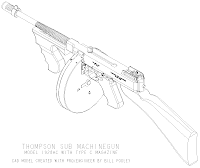CAD originally meant Computer-Aided Drafting or designing because of its original use as a replacement for traditional drafting. Related acronyms are CADD, which stands for "computer-aided design and drafting", CAID for computer-aided industrial design and CAAD, for "computer-aided architectural design". All of these terms are essentially synonymous, but there are a few subtle differences in meaning and application.
CAM (Computer-aided manufacturing) is also often used in a similar way, or as a combination (CAD/CAM). The term CAD is generally used for graphical design, whereas non-graphical computer-aided design, though there may be a focus on shape and shape-related functions, is usually called Knowledge-based engineering (KBE).
Today, almost all student starting from high school till the universities must know how to use CAD
CAD is used to design, develop and optimize products, which can be goods used by end consumers or intermediate goods used in other products. CAD is also extensively used in the design of tools and machinery used in the manufacture of components, and in the drafting and design of all types of buildings, from small residential types (houses) to the largest commercial and industrial structures (hospitals and factories).CAD is mainly used for detailed engineering of 3D models and/or 2D drawings of physical components, but it is also used throughout the engineering process from conceptual design and layout of products, through strength and dynamic analysis of assemblies to definition of manufacturing methods of components.CAD has become an especially important technology, within the scope of Computer Aided technologies, with benefits such as lower product development costs and a greatly shortened design cycle. CAD enables designers to lay out and develop work on screen, print it out and save it for future editing, saving time on their drawings.

.jpg)
